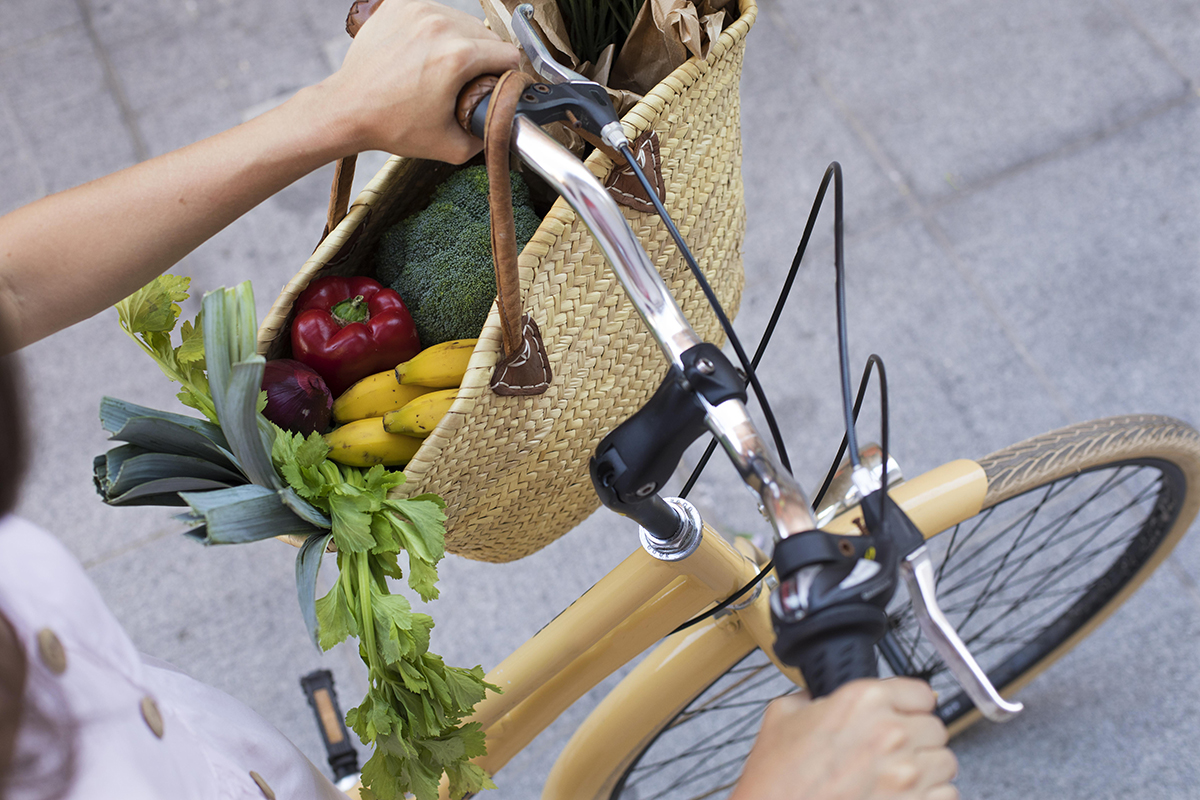Summer dishes – What to eat in hot weather?

Higher temperatures bring changes to our daily routines, including our eating habits. We have less appetite and less desire to spend a long time in the kitchen. Eating in hot weather can be challenging. But what are the best summer dishes to eat in hot weather? We’ve researched it for you.
Hydration is the key word
With warm weather, it’s especially important to take good care of your body as it works hard to maintain your body temperature stable. A normal body temperature is around 37 degrees Celsius. If your body temperature is higher, sweating is a way to cool down.
When your fluid levels are not well balanced, you sweat less and your body has difficulty getting rid of heat. Therefore, adequate fluid intake, also known as hydration, is top priority in warm weather!
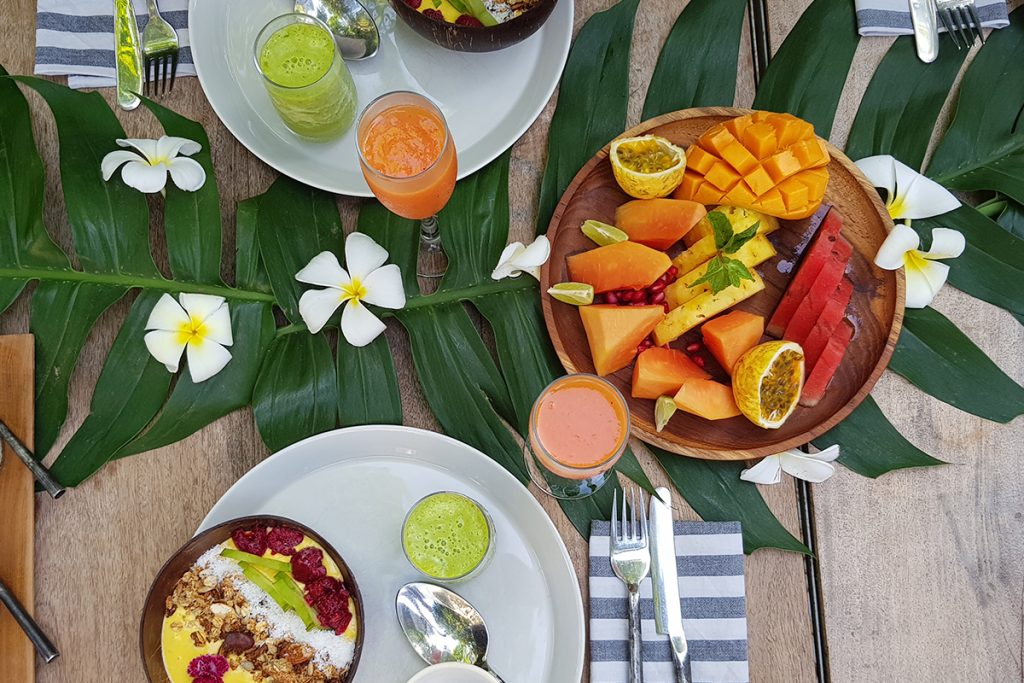
How do you get fluids?
You receive fluids in various ways:
- By drinking, with the advice in warm weather being at least 2 liters of water per day. Not everyone is good at it, as how much water should you drink per day? Alcohol does not hydrate, but instead promotes dehydration. And sugary drinks do not help to replenish fluids well.
- By eating certain summer dishes. This provides about 900 milliliters of fluid per day. Through metabolic water released in your body during the conversion of proteins, fats, and carbohydrates into energy. That’s about 350 milliliters of fluid per day.
How much fluid you need depends on various factors such as age and level of activity. Also, some people sweat more than others. Can you drink too much water? Be careful, excess fluid is not recommended either, as it leads to low levels of salts (sodium) in the blood.

Cold or warm food and drinks?
In hot weather, you often crave something cold because it feels refreshing. But did you know that drinking a hot drink often provides more cooling? The cooling effect of a cold drink is small, short-lived, and causes less sweating. On the other hand, a hot drink causes sweating, but cools your body only when the sweat evaporates. For this, a nice breeze from outside or from a fan is needed.
It’s best to consume your summer dishes and drinks at room temperature or lukewarm. There are some disadvantages to cold food and drinks. For example, cold suppresses the thirst stimulus faster. It also requires more work from your body, as it still needs to warm up the food and it’s harder to digest.
What you better not eat in hot weather
Food has a thermogenic effect on the body. This means that the body uses energy to digest, transport, store, and absorb nutrients. This releases heat, which raises your body temperature. Your body wants to get rid of this heat and compensates by sweating. With warm weather, you want to minimize the burden on your body and digestion with the choice of certain summer dishes.
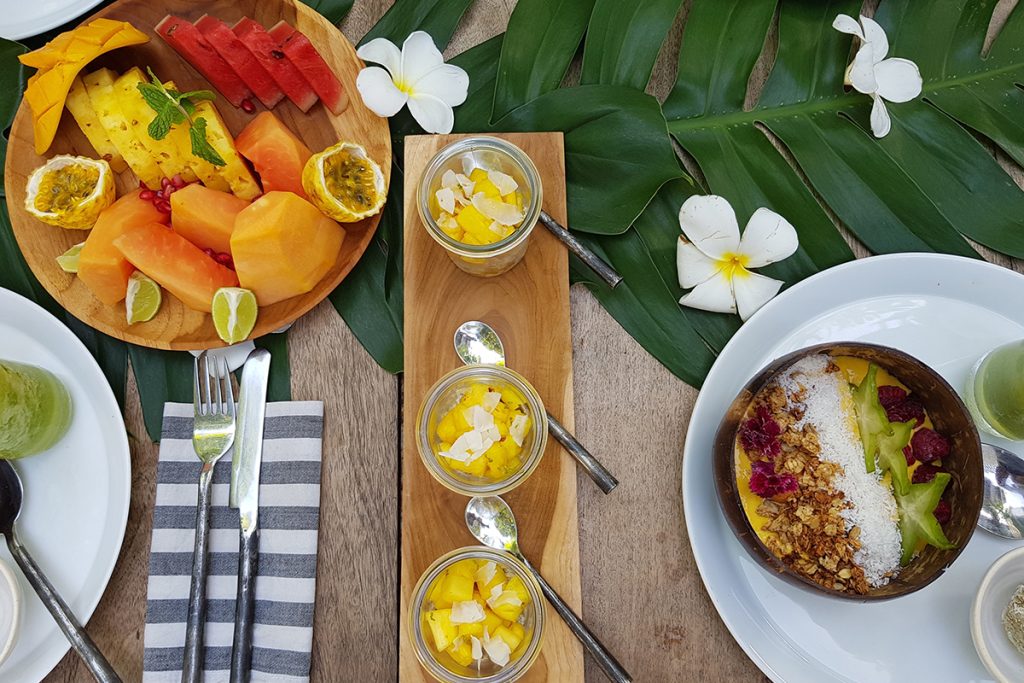
Avoid heavy summer dishes
Summer dishes that are heavy and high in calories require more energy for your body to digest, and this also generates more heat. Heavy meals often contain animal proteins, lots of (animal) fat, fried dishes, or spicy food.
Eat proteins in moderation
Proteins are important and you need large amounts to function properly, but don’t overdo it on hot days. The body uses more fluids to excrete the breakdown products of proteins. Also, proteins are difficult to break down, which generates more heat. Therefore, save the barbecue with meat for a cooler day or make other choices in what you put on the grill.
Do you need to eat more salt in hot weather?
It is a big misconception that you need extra salt in hot weather. Our diet already contains plenty of salt, which replenishes the loss from sweating. Often, people actually consume more than the recommended 6 grams per day. When taking extra salt, your body needs more fluids to get rid of it.
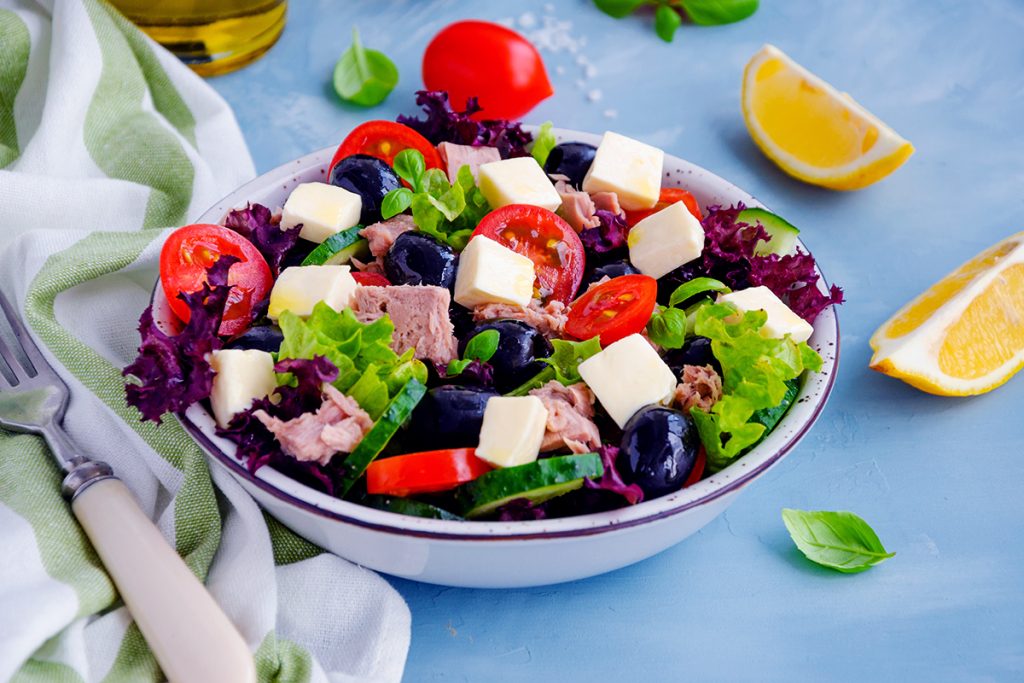
3 tips on what to eat in hot weather
Below are 3 tips on what is good to eat in hot weather:
01. Opt for cooling and hydrating foods
When you suffer from the heat, it is advisable to consume more food from summer dishes that are rich in moisture and have a sweet, bitter, or sour taste. Mainly fruits and vegetables, but also pasta contains a fair amount of moisture.
No wonder pasta salads are so popular in summer. Eating with the season also has its advantages. Seasonal fruits and vegetables generally have a higher moisture content.
02. Go for a light meal
Light summer dishes are easy to digest because it requires less energy and heat from your body. Think of vegetable soup, rice and grain dishes, salad, and fruit.
03. Take smaller portions
In addition to choosing a light meal, it is also good to look at the portion size. When you have little appetite, you will automatically eat less. It is good to listen to that need. The more you eat, the higher the thermogenic effect of your meal.
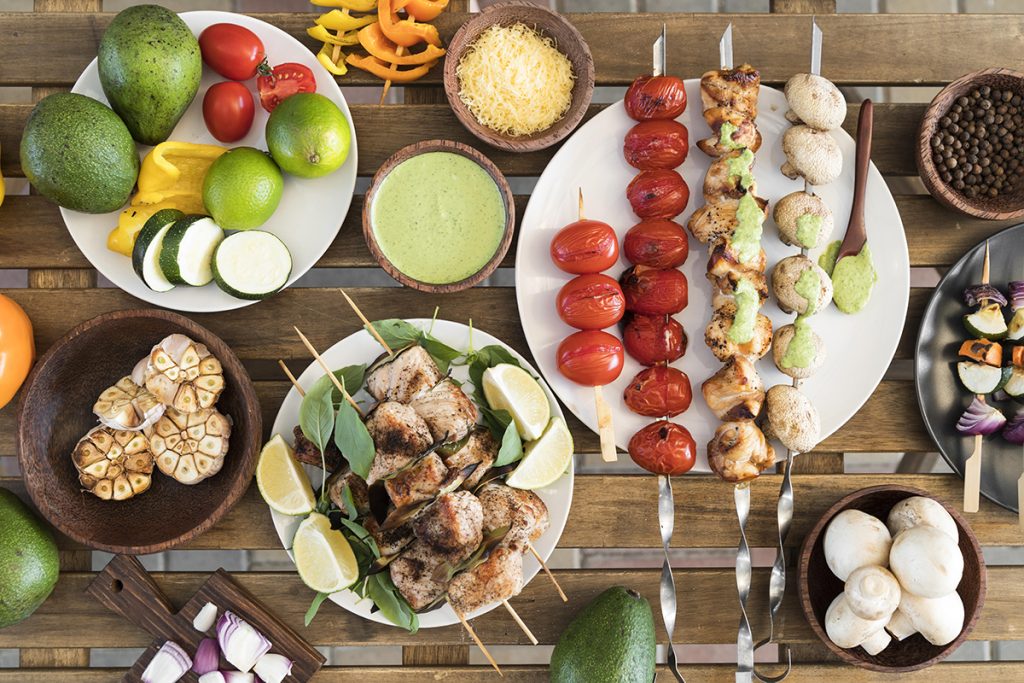
Summer dishes: what to put on your menu?
Lacking inspiration for summer dishes? Then search specifically for ‘recipes hot weather’ or ‘dinner hot weather’. And make sure your summer meal includes:
- Summer vegetables. Endive, broccoli, spinach, lettuce, arugula, fennel, Chinese cabbage, mushrooms, radish, cucumber, watercress, sprouts like alfalfa and cress, seaweed, celery, avocado, zucchini, and eggplant.
- Summer fruits. strawberries, berries, melon, rhubarb, mango, papaya, plums, (water)melon, grapes, banana, kiwi, apple, orange, and grapefruit.
- Certain herbs like (pepper)mint, tarragon, and celery. For example, (pepper)mint activates receptors in the mouth that provide a cold sensation.
- Grains. wheat, rice, rye, and spelt.
- Meat (or substitutes). Fish, and dairy: turkey, whitefish, squid, crab, soy (tofu), and yogurt (from cow’s milk).
- Nuts, seeds, and oils. Cashews, macadamia nuts, flaxseed, olive oil, wheat germ oil, and avocado oil.

For example, make a poke bowl with rice, watermelon, edamame (soybeans), avocado, and radishes. And what about tzatziki with your meal? The combination of cucumber, mint, and yogurt is wonderfully refreshing. With these kind of summer dishes, you also get your portion of moisture. That’s a win-win!
Summer dishes – What to eat in hot weather conclusion
We can’t emphasize it enough: ensure adequate fluid intake during hot days! Drink at least 2 liters of water per day and choose moisture-rich and cooling food. Summer dishes are light, small, and includes plenty of vegetables and fruits. And listen to your own needs. The principle of one size fits all does not apply here either.
Finally, while it’s tempting to opt for icy-cold treats on scorching summer days, it’s advisable to consume food and beverages at room temperature. This allows your body to regulate its temperature more comfortably, keeping you cool in the heat.



















